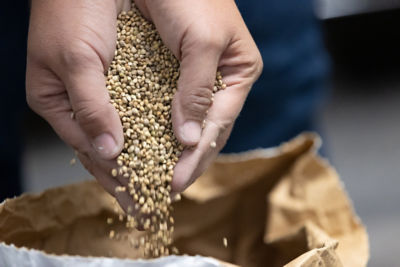Causal Agent
Cucumber vein-yellowing virus (CVYV)
Vector
Silverleaf whitefly (Bemisia tabaci)
Distribution
Iran, Israel, Jordan, Spain, Sudan, Turkey
Symptoms
Melon and cucumber exhibit vein yellowing, vein clearing, chlorosis, necrosis and stunting with a corresponding reduction in yield. Parthenocarpic cucumbers exhibit severe symptoms, while non-parthenocarpic cucumbers have been reported to be asymptomatic carriers of the virus. Cucumber fruit symptoms appear as a light to dark green mosaic. In watermelon, foliar symptoms are inconspicuous or not expressed, however fruit cracking has been observed. Squash may be asymptomatic or may exhibit mild vein yellowing and chlorotic mottling of leaves.
 Irregular shaped watermelon due to Cucumber vein-yellowing virus infection. (Courtesy of Moshe Lapidot)
Irregular shaped watermelon due to Cucumber vein-yellowing virus infection. (Courtesy of Moshe Lapidot)
 Cucumber vein-yellowing virus on melon.
Cucumber vein-yellowing virus on melon.
Conditions for Development
CVYV is transmitted in a semi-persistent manner (<six hours) by the silverleaf whitefly, Bemisia tabaci. Movement of infected transplants can spread the virus over long distances. Whiteflies can easily spread the virus from plant to plant. CVYV is not considered to be seed-borne nor seed-transmitted. The virus survives in cucurbit weeds and volunteers, jimsonweed, Nicotiana spp., sowthistle, bindweed and Malva spp.
Control
Planting resistant cultivars is the best means of control. Currently, resistance is only commercially available in cucumber. Implement insect exclusion (minimum 50–52 mesh/297 micron screen) to minimize whitefly infestation in greenhouse-grown crops. Seedlings should be grown in a whitefly-free environment. Use insecticides to control the vector. Rotate modes of action to prevent development of insecticide-resistant whitefly populations.



